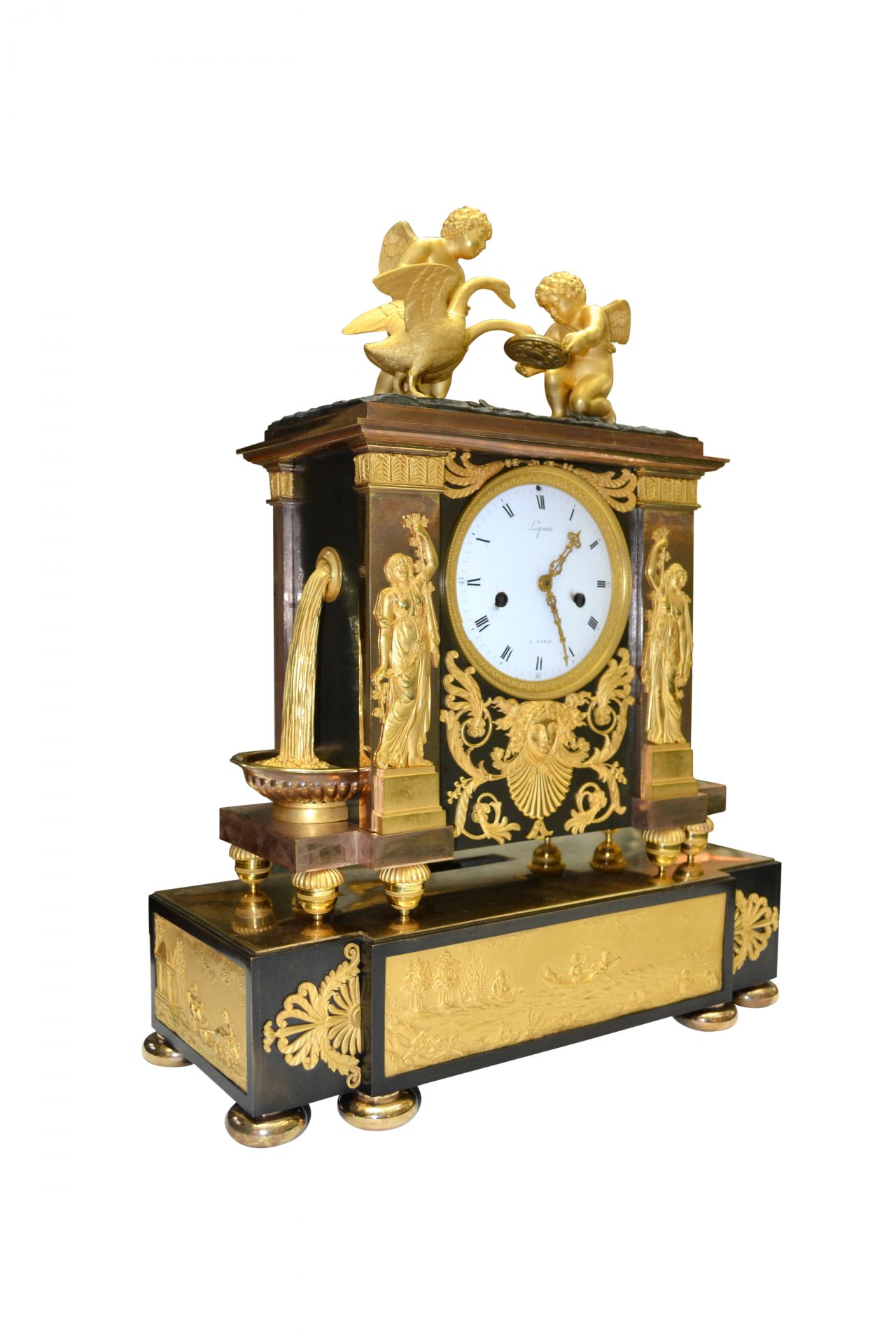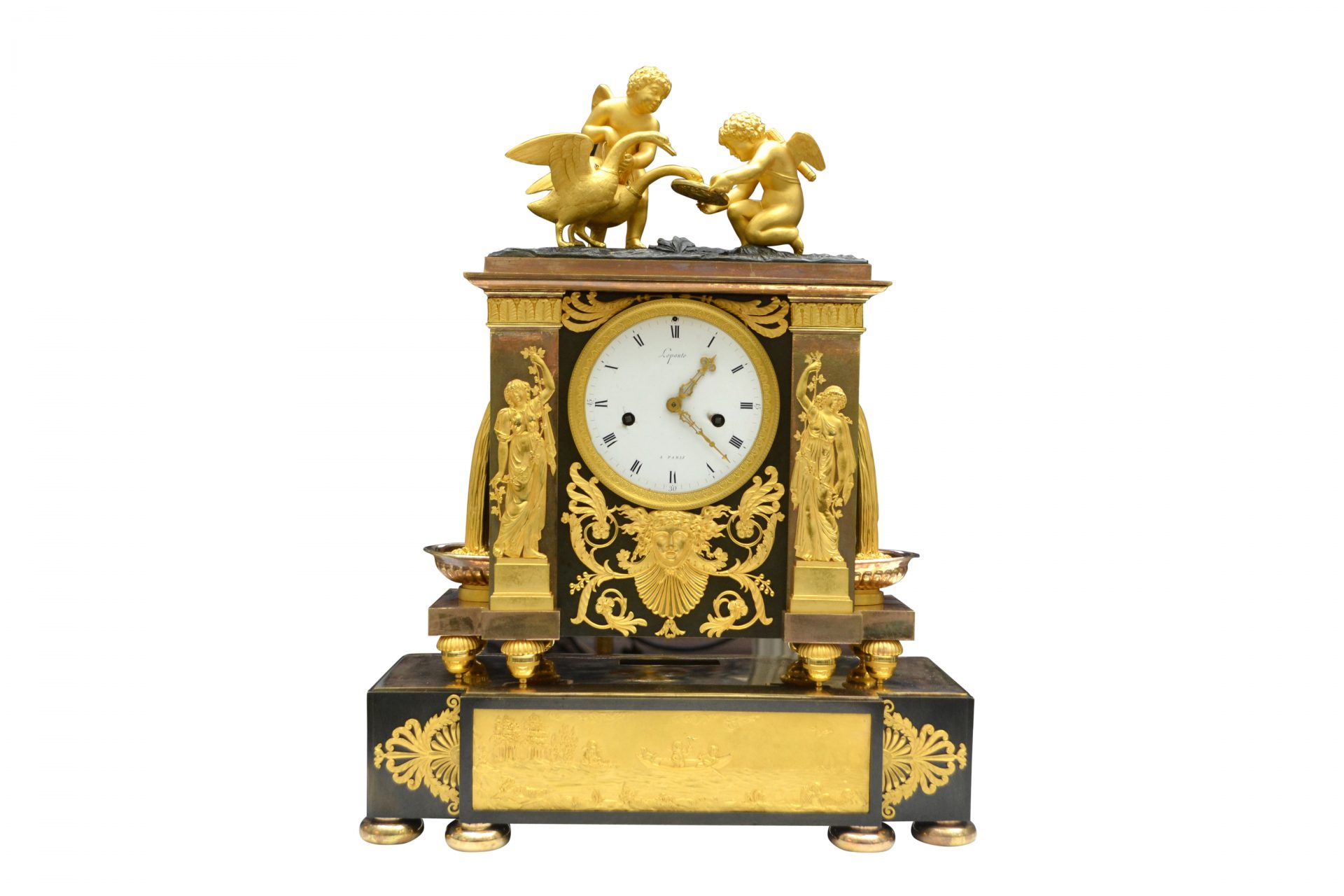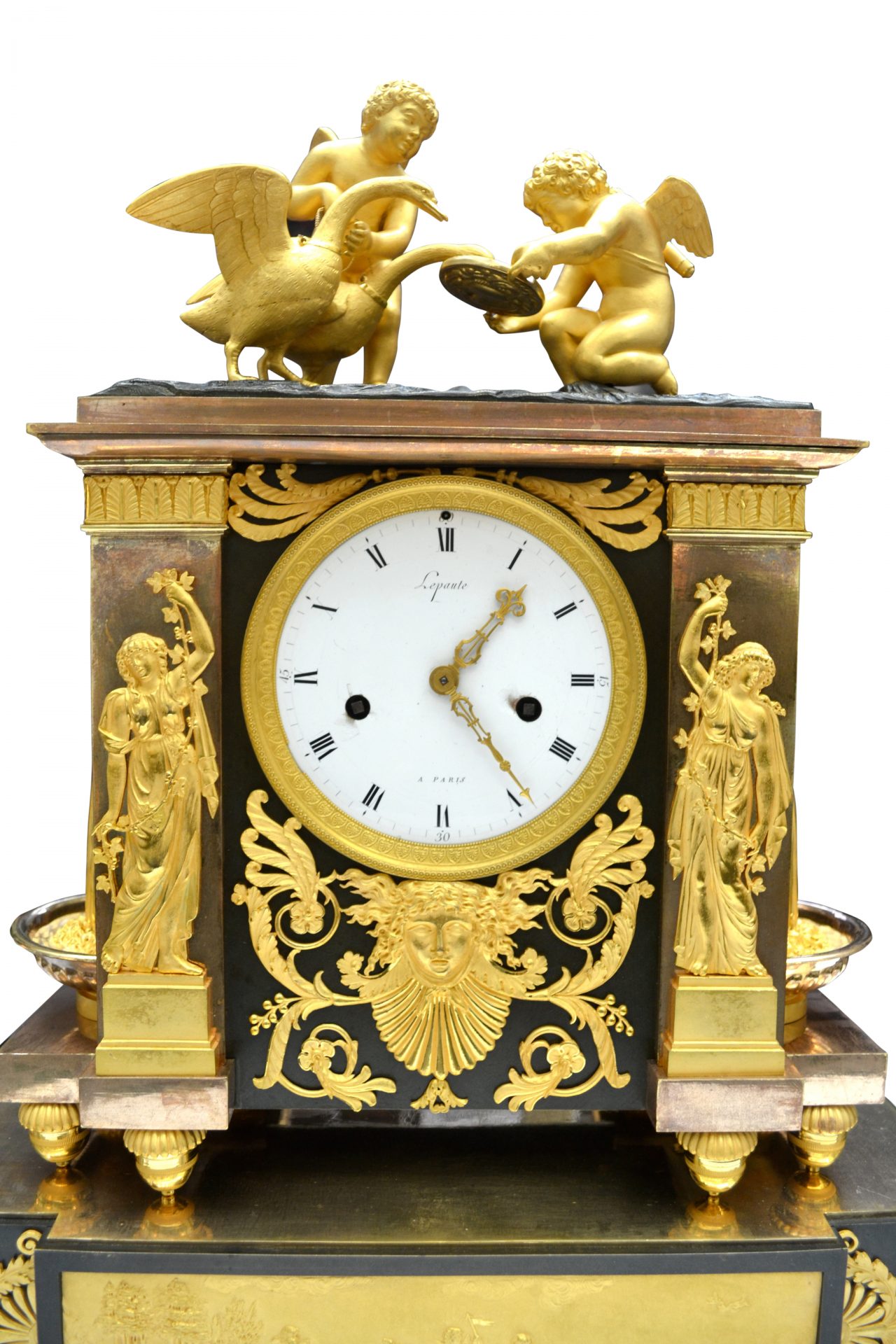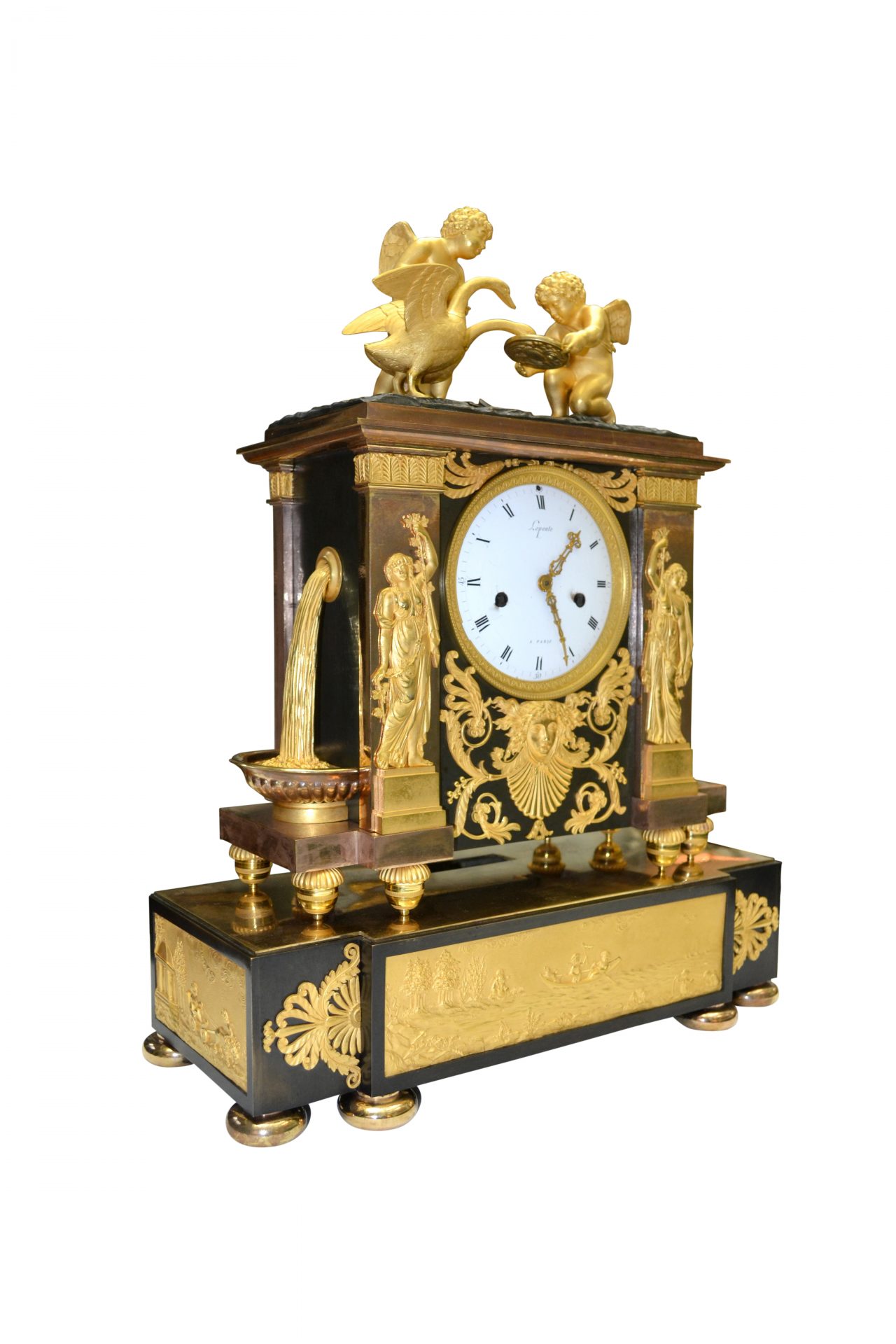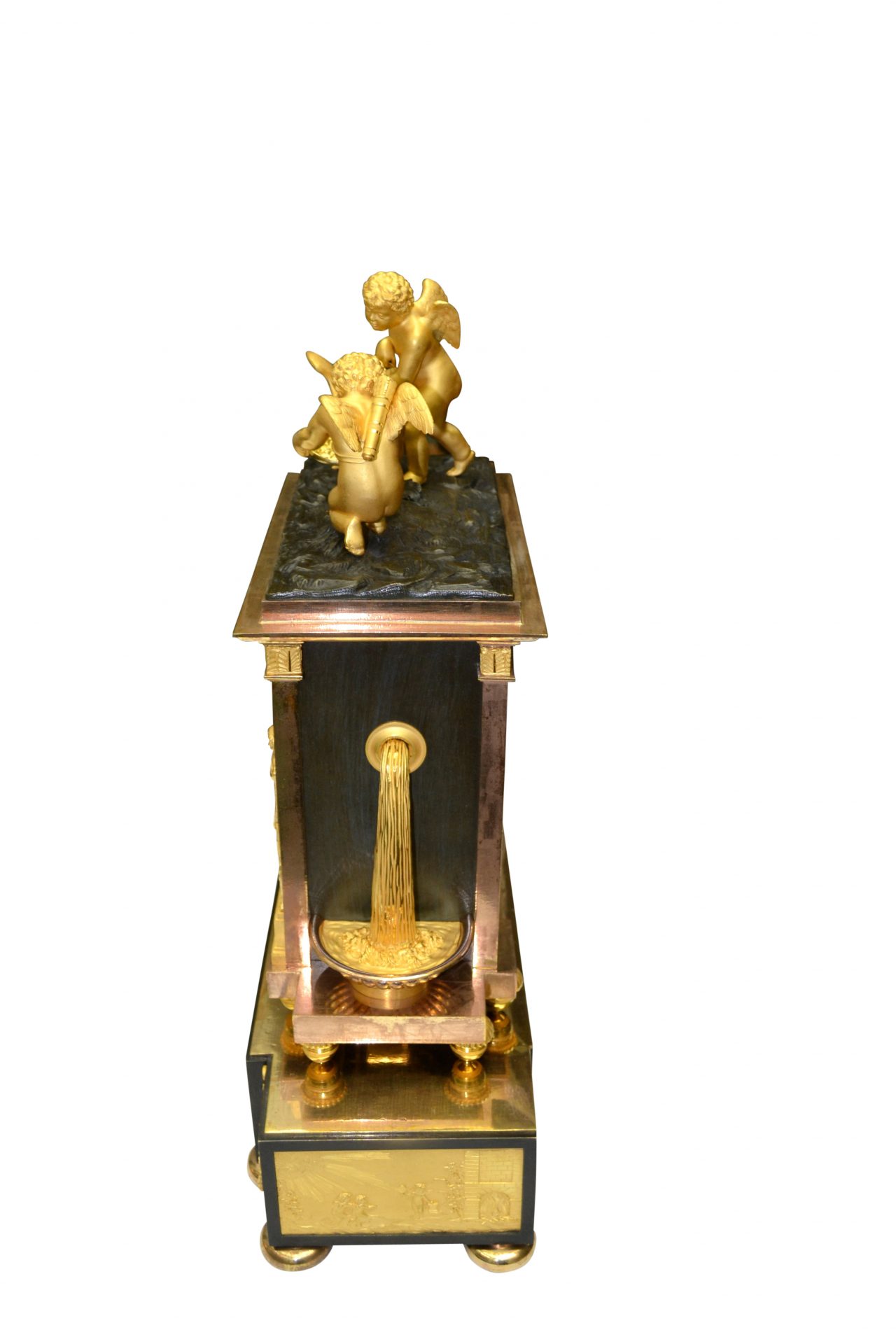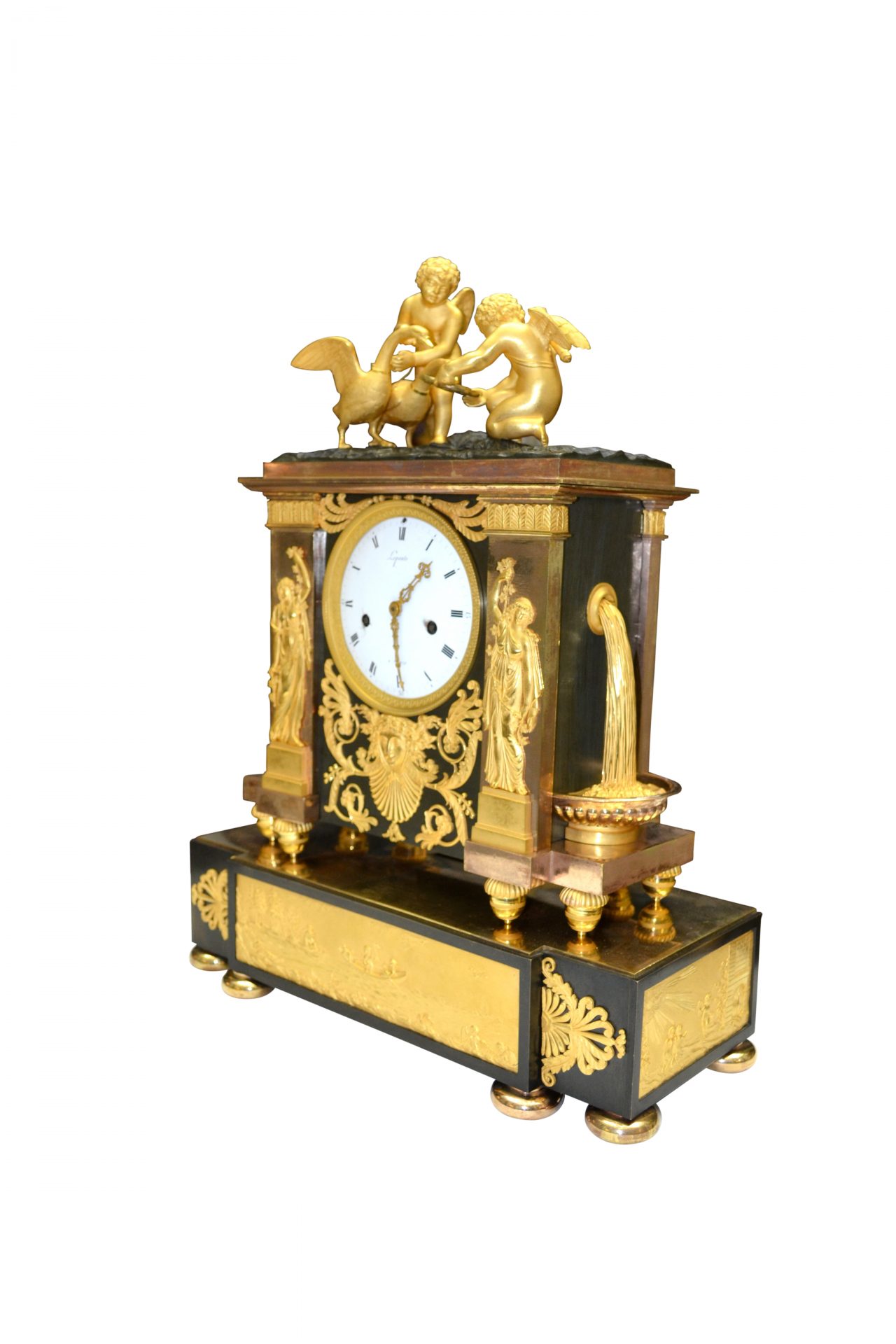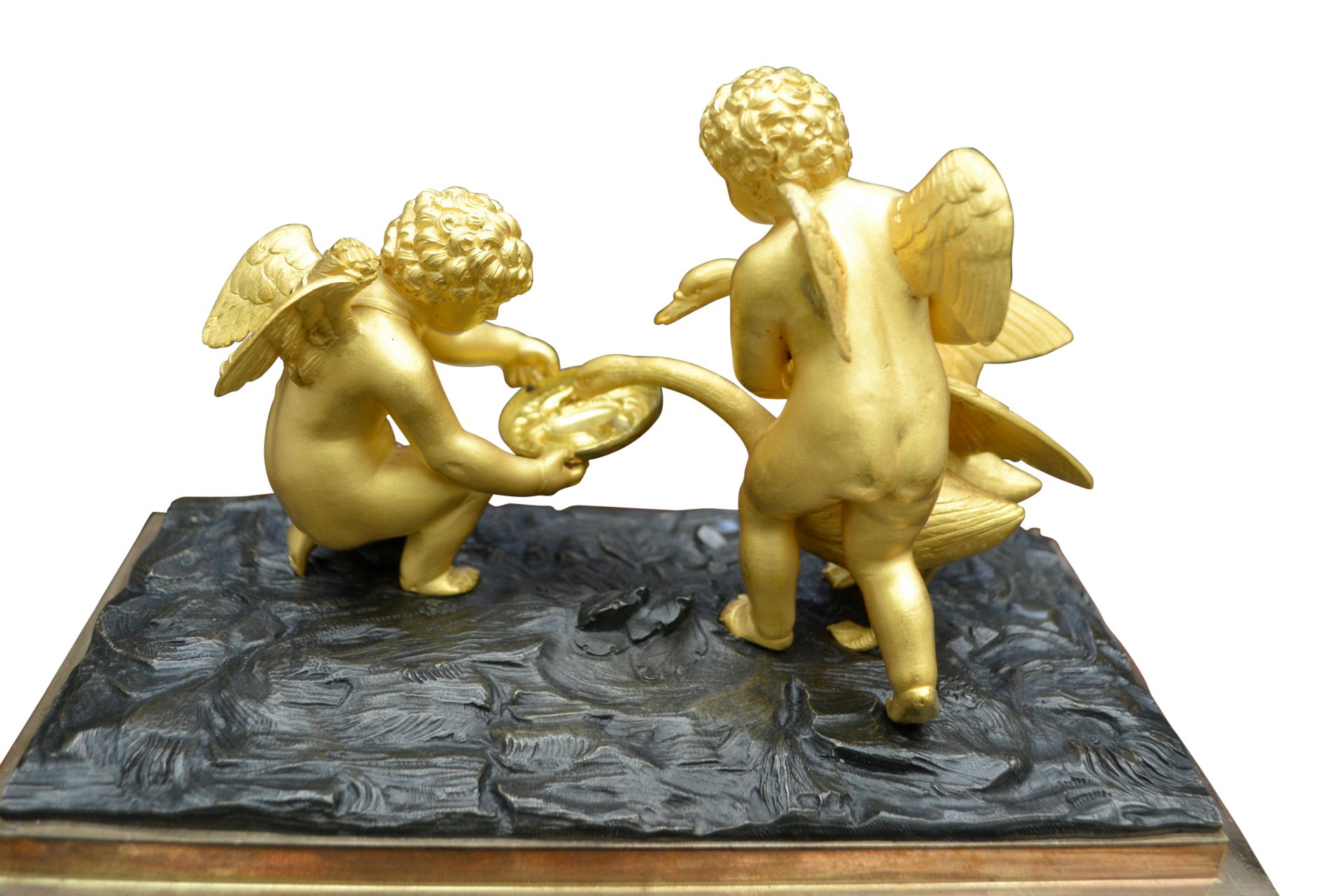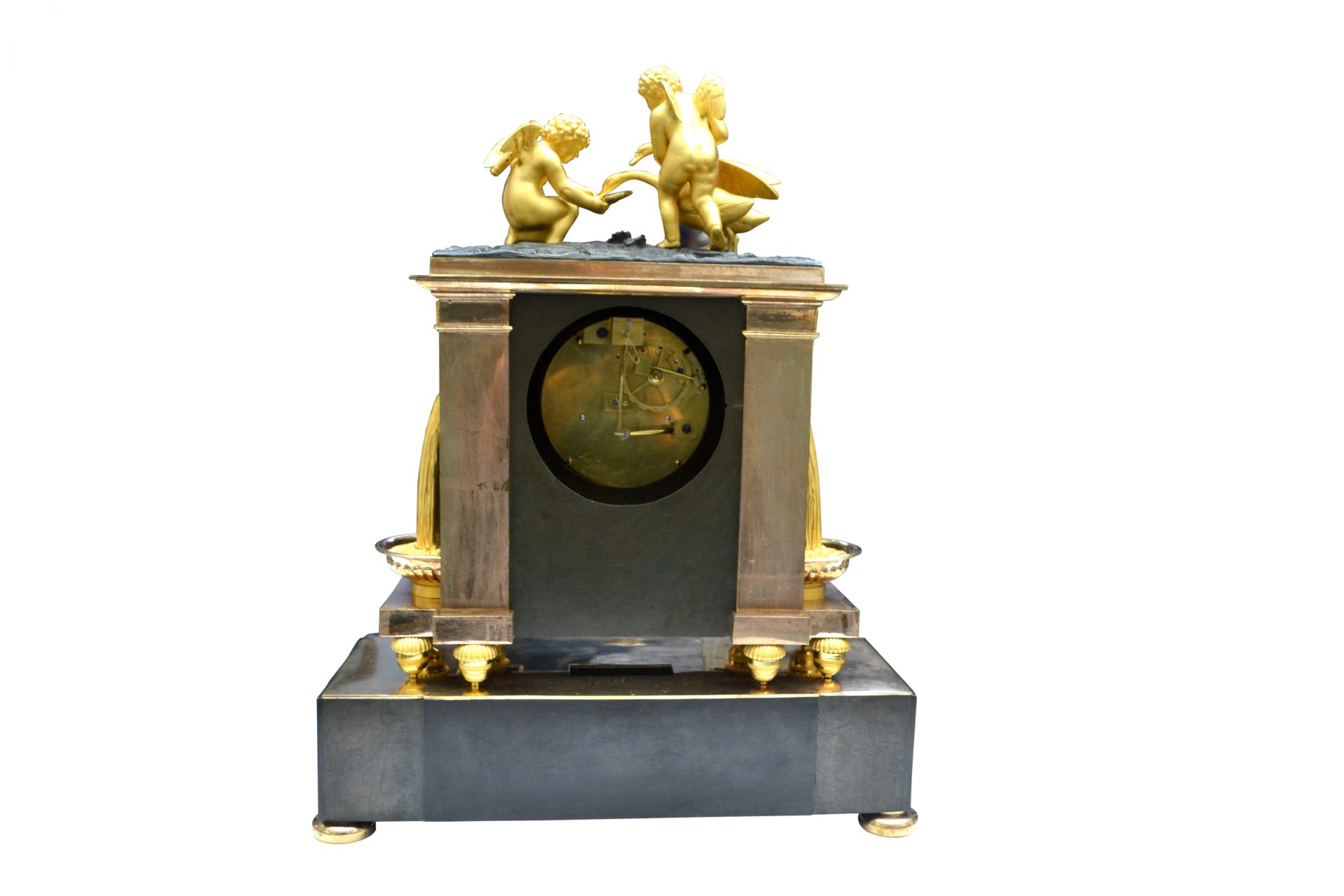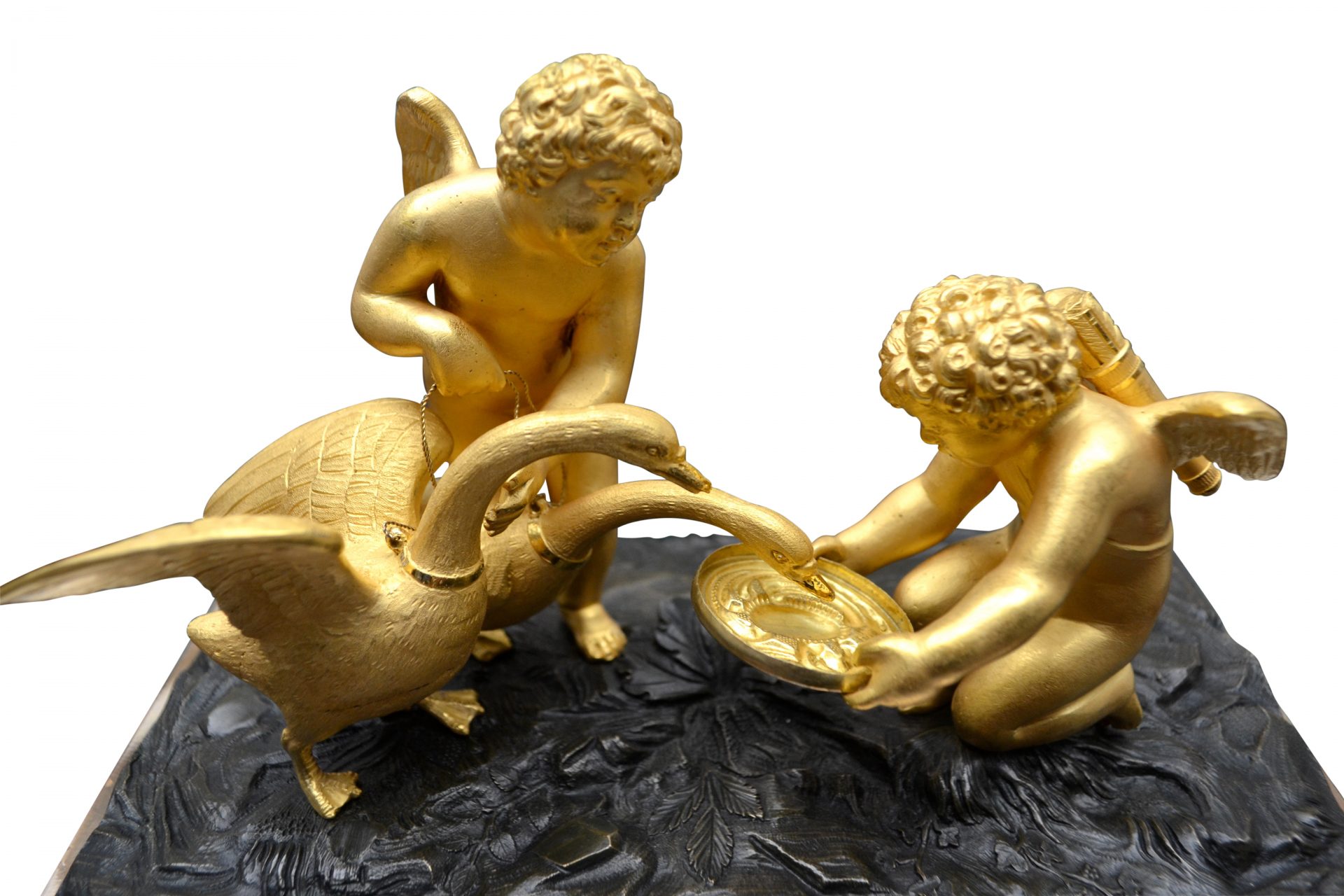A Rare Model of a French Empire Clock signed Lepaute
$30,000.00
An extremely rare and important French Empire mantle clock signed by the master clock making dynasty of Jean-Andre Lepaute and his brother Jean-Baptiste Lepaute.
The case, in the form of an antique portal, is in two sections both in patinated bronze richly decorated with applied gilded bronze mounts. The top section shows two standing vestal virgins on either side of the white enamel dial holding aloft a grape vine; below the dial is an elaborate gilded head of Mercury?. On either side of the top section is a fountain spilling water into a gilded basin. On top of the clock are two winged putti, one standing, one kneeling holding a bowl for two swans to drink from.
The top section rests on six toupie feet attached to the lower rectangular section of the clock. There is a gilded frieze along the front and the two sides of the base. The base sits on six bun feet.
The dial has roman numerals and gilded hands and is signed Lepaute at the top. The backplate of the silk-string suspension movement is also signed Lepaute a Paris, with a production date? of ten (4 + 2), possibly referring to the Napleonic calendar started in 1793. The clock was made in Paris circa 1800.
Jean-André Lepaute (23 November 1720 – 11 April 1789), together with his younger brother Jean-Baptiste Lepaute (6 February 1727 – 18 March 1802),[1] was a founder of an outstanding French clockmaker dynasty of their day, holding the brevet horlogers du Roi. His brother assumed his workshop in 1774, when Jean-André retired; he died after a long illness at Paris. Lepaute was an innovator, to whom numerous improvements in horology are due, especially his pin-wheel escapement. He constructed refinements to the clockwork in which the gears are all in the horizontal plane, making possible the revolving dials of clocks in urns or in globes characteristic of the classicizing Louis XVI style. Three editions of his Traité d’Horlogerie were published in Paris, in 1755, 1760 and 1767. A small volume, Description de plusieurs ouvrages d’horlogerie (“A Description of several works of clockmaking”) appeared in 1764.

